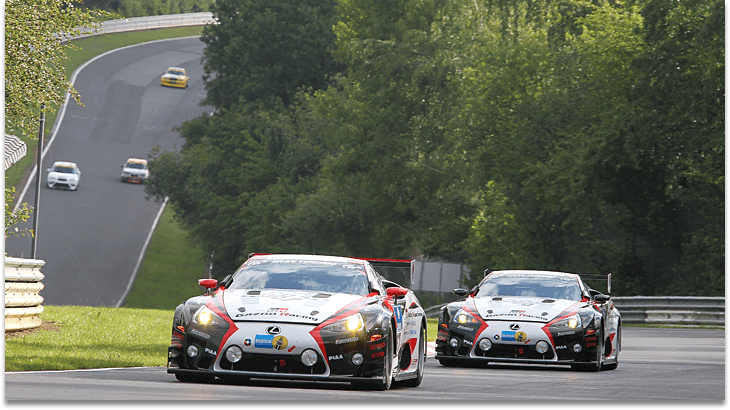
In 2011, the LFA was again entered in the Nürburgring 24-hour race. It had already won the SP8 class championship the previous year and production of a commercial model had already started. So then, why enter the race? Simply because there is no final goal in the effort to “make ever-better cars.”
The machine, whose aerodynamic performance had been improved compared to the previous year’s model, was equipped with many of the items adopted in the LFA Nürburgring Package, installed in 50 of the limited 500 vehicles. Although the objective of entering the race continued to be development testing, this could be considered the year we took on an even more serious, full-fledged challenge. For example, Akio Toyoda, who goes by “Morizo”, told the team, “Please aim to get in the top ten overall.” This meant that the team had to battle world-leading warriors on an equal basis.
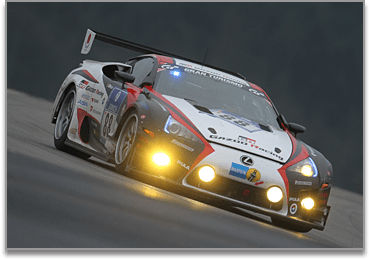 Two cars were again entered in the race this year. In the preliminary round, Car No.87 placed 26th overall (3rd in the SP8 class), and Car No.88 placed 23rd overall (2nd in the SP8 class). As a result, the LFA earned a blue flashing light (a high-brightness LED light), which is installed only on the windshields of cars that placed in the top group in the preliminary round. This was the moment the LFA’s speed was recognized at Nürburgring.
Two cars were again entered in the race this year. In the preliminary round, Car No.87 placed 26th overall (3rd in the SP8 class), and Car No.88 placed 23rd overall (2nd in the SP8 class). As a result, the LFA earned a blue flashing light (a high-brightness LED light), which is installed only on the windshields of cars that placed in the top group in the preliminary round. This was the moment the LFA’s speed was recognized at Nürburgring.
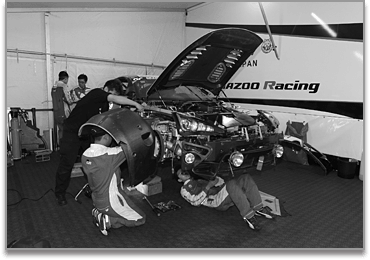 However, Nürburgring was not going to be easy on us. An engine problem early on in the race forced Car No.87 to have its engine replaced. Car No.88 was rear-ended in the middle of the race and the resulting damage to its rear caused a significant drop in its position. However, all-out efforts by the mechanics helped the car return to the track. From the start of the project, GAZOO Racing had always entered the Nürburgring 24-hour race with a pit crew consisting mostly of mechanics who were Toyota employees. In the beginning, our inexperienced pit crews were painful to watch, but had since grown to the point where they were receiving unequivocal approval from racers on other teams.
However, Nürburgring was not going to be easy on us. An engine problem early on in the race forced Car No.87 to have its engine replaced. Car No.88 was rear-ended in the middle of the race and the resulting damage to its rear caused a significant drop in its position. However, all-out efforts by the mechanics helped the car return to the track. From the start of the project, GAZOO Racing had always entered the Nürburgring 24-hour race with a pit crew consisting mostly of mechanics who were Toyota employees. In the beginning, our inexperienced pit crews were painful to watch, but had since grown to the point where they were receiving unequivocal approval from racers on other teams.
In terms of results, Car No.88 placed 41st overall (3rd in the SP8 class) and Car No.87 placed 134th overall (8th in the SP8 class), which were not improvements over the previous year’s results. Although winning is not everything in a race, the GAZOO Racing members felt that they should have done better, given the car’s potential.


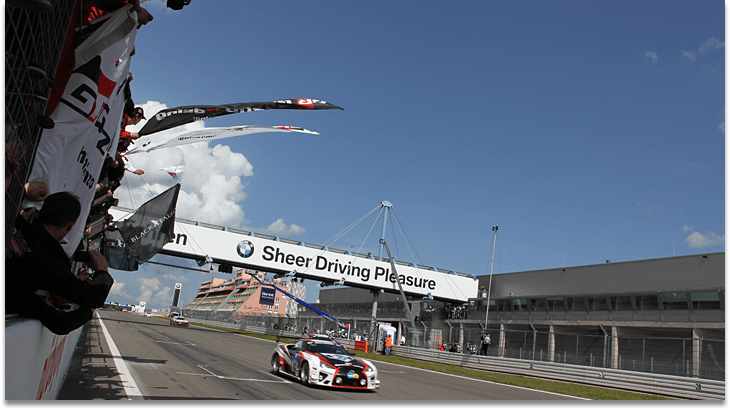
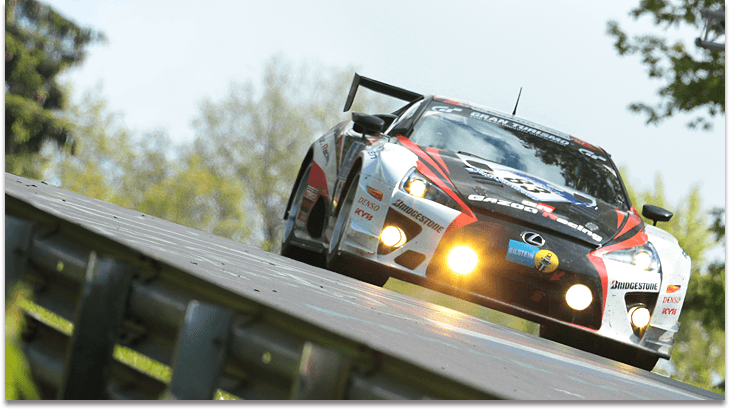
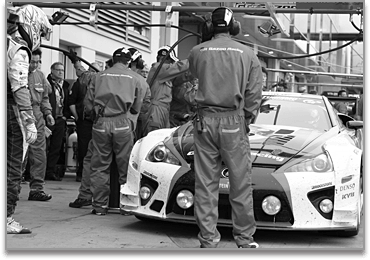 In the finals, the LFA kept a stable pace, staying at around 20th place overall. It held the leading position in its class, far ahead of others. Although a bumper damaged by contact with another car had to be replaced in the middle of the race, swift work by the mechanics enabled the car to return to the course still maintaining the top position in the class. The mechanics’ skill level for performing accurate and swift work had been improving year after year. For example, as part of its normal routine work, the pit crew managed to complete a brake replacement in the time it took to refuel.
In the finals, the LFA kept a stable pace, staying at around 20th place overall. It held the leading position in its class, far ahead of others. Although a bumper damaged by contact with another car had to be replaced in the middle of the race, swift work by the mechanics enabled the car to return to the course still maintaining the top position in the class. The mechanics’ skill level for performing accurate and swift work had been improving year after year. For example, as part of its normal routine work, the pit crew managed to complete a brake replacement in the time it took to refuel.

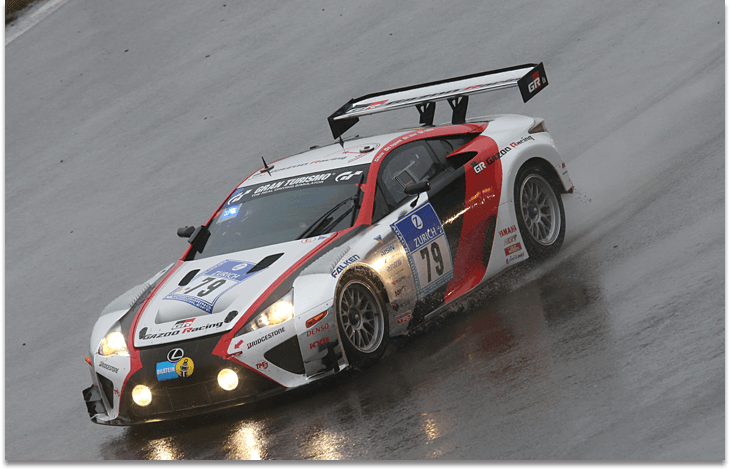
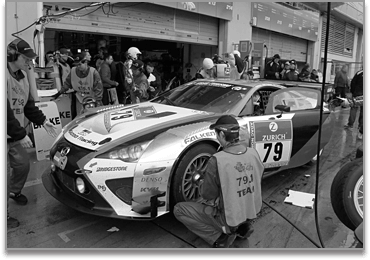 As the first preliminary round was held under wet conditions, the LFA drivers took it easy to be safe and set their sights on the second preliminary round, winning the rights to race in the Top-40 Qualifying Session and placing 30th overall (1st in the SP8 class). The finals commenced under a cloudy sky and the rainfall that intensified as dusk approached caused many spinouts and crashes. The race organizer judged it too dangerous to continue and decided to raise the red flag to halt the race. In the restart that followed approximately 9 hours of interruption, the LFA climbed from third place to second within its class, and crossed the finish line placing 37th overall (2nd in the SP8 class). Although a significant weight reduction had improved its speed, the LFA was unable to fully capitalize on it. The solution for this issue was carried over to 2014.
As the first preliminary round was held under wet conditions, the LFA drivers took it easy to be safe and set their sights on the second preliminary round, winning the rights to race in the Top-40 Qualifying Session and placing 30th overall (1st in the SP8 class). The finals commenced under a cloudy sky and the rainfall that intensified as dusk approached caused many spinouts and crashes. The race organizer judged it too dangerous to continue and decided to raise the red flag to halt the race. In the restart that followed approximately 9 hours of interruption, the LFA climbed from third place to second within its class, and crossed the finish line placing 37th overall (2nd in the SP8 class). Although a significant weight reduction had improved its speed, the LFA was unable to fully capitalize on it. The solution for this issue was carried over to 2014.



